Top 4 AI tools to create research presentation in seconds
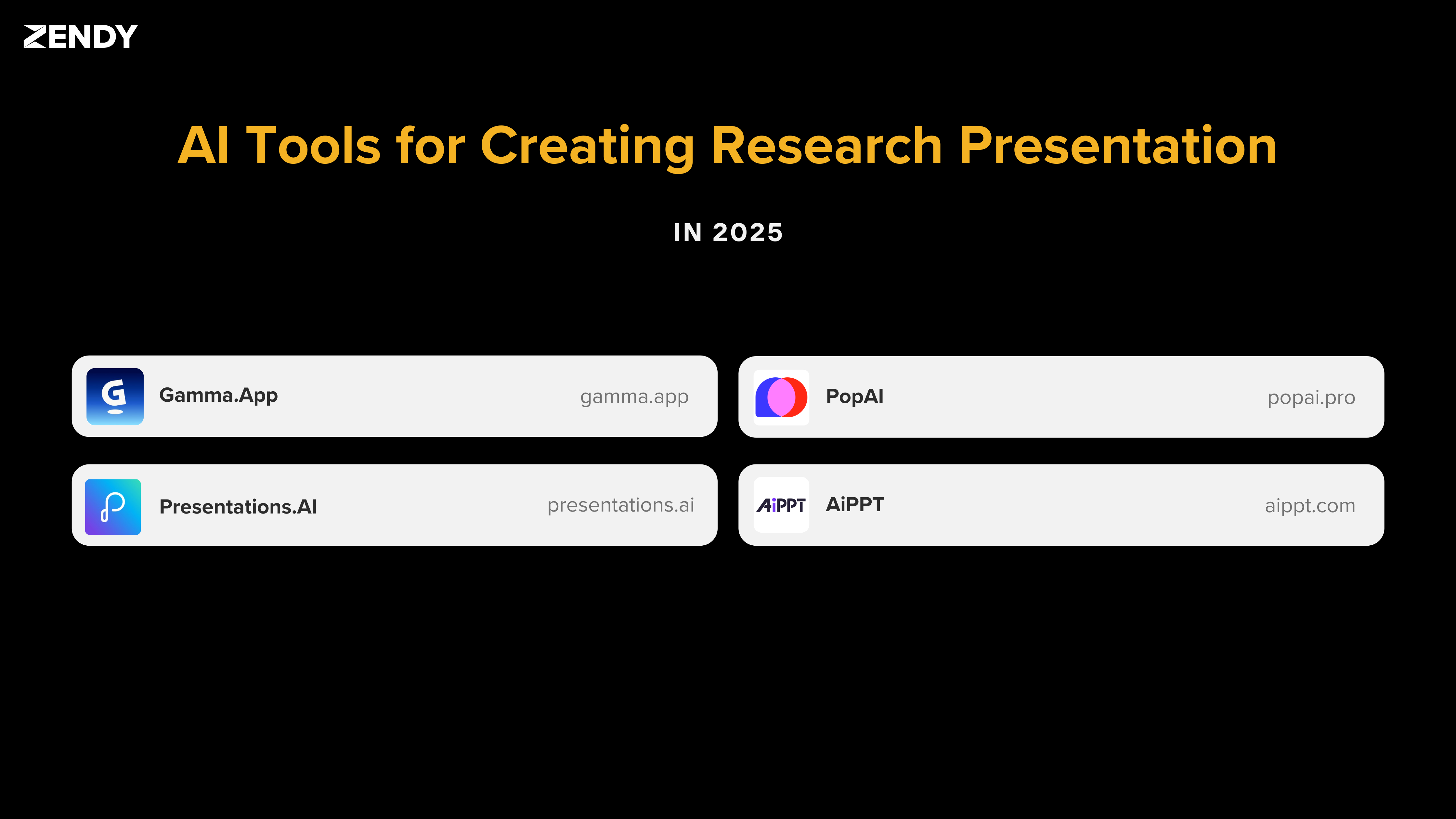
Creating a research presentation often involves a lot of steps, such as summarising findings, choosing visuals, arranging slides, and checking formatting. This process can take hours or even days, especially when the topic is complex or time is limited.
However, researchers, students, and professionals are using AI tools to simplify how they build and design their presentations. These tools use AI to assist you with slide generation, layout, content summarisation, and more.
Additionally, some AI tools are designed specifically for academic use. They help present your research clearly, quickly, and in a format that meets academic standards.
In this article, we’ll explore four AI tools, Gamma, Presentations.AI, PopAI, and AiPPT, that are changing how research is presented.
How AI Tools Help in Research Presentations
Creating research presentations involves common challenges. These include time constraints, organising detailed information, and using consistent, professional design.
AI tools address these issues by generating slides automatically, summarising long texts, and applying consistent design styles across all slides.
According to poweredtemplate.com, their case study shows that using AI to generate presentations can reduce the time spent on presentation preparation by up to 70%. This allows more time to focus on the research itself.
The benefits of using AI tools in research presentations include:
- Time Efficiency: AI tools turn hours of work into minutes by automating slide creation.
- Content Organisation: Complex research findings are structured into logical, easy-to-follow presentations.
- Design Consistency: Professional aesthetics are maintained throughout the deck, ensuring a polished look.
4 Leading AI Tools for Research Presentations Simplifying Academic Decks
Several AI-powered tools now support the creation of academic presentations. These tools organise information, generate content, and format slides automatically.
| Tool | Best For | Key Features | Academic Integration | Price Range |
| Gamma | Research summaries | Gamma slide tech, AI content extraction, templates | Uploads papers, citation support | Free–Premium |
| Presentations.AI | Collaborative projects | Real-time editing, smart layouts, team sharing | Google Drive, citation tools | Free–Premium |
| PopAI | Data-heavy presentations | Data visualisation, chart AI, analytics import | Excel, CSV, academic datasets | Free–Premium |
| AiPPT | Quick slide generation | 1-click decks, multilingual support, templates | Reference manager integration | Free–Premium |
Each tool offers features suited to different presentation needs, from summarising research papers to visualising data. Integration with academic platforms varies depending on the software.
Gamma: Best for Text-Heavy Research
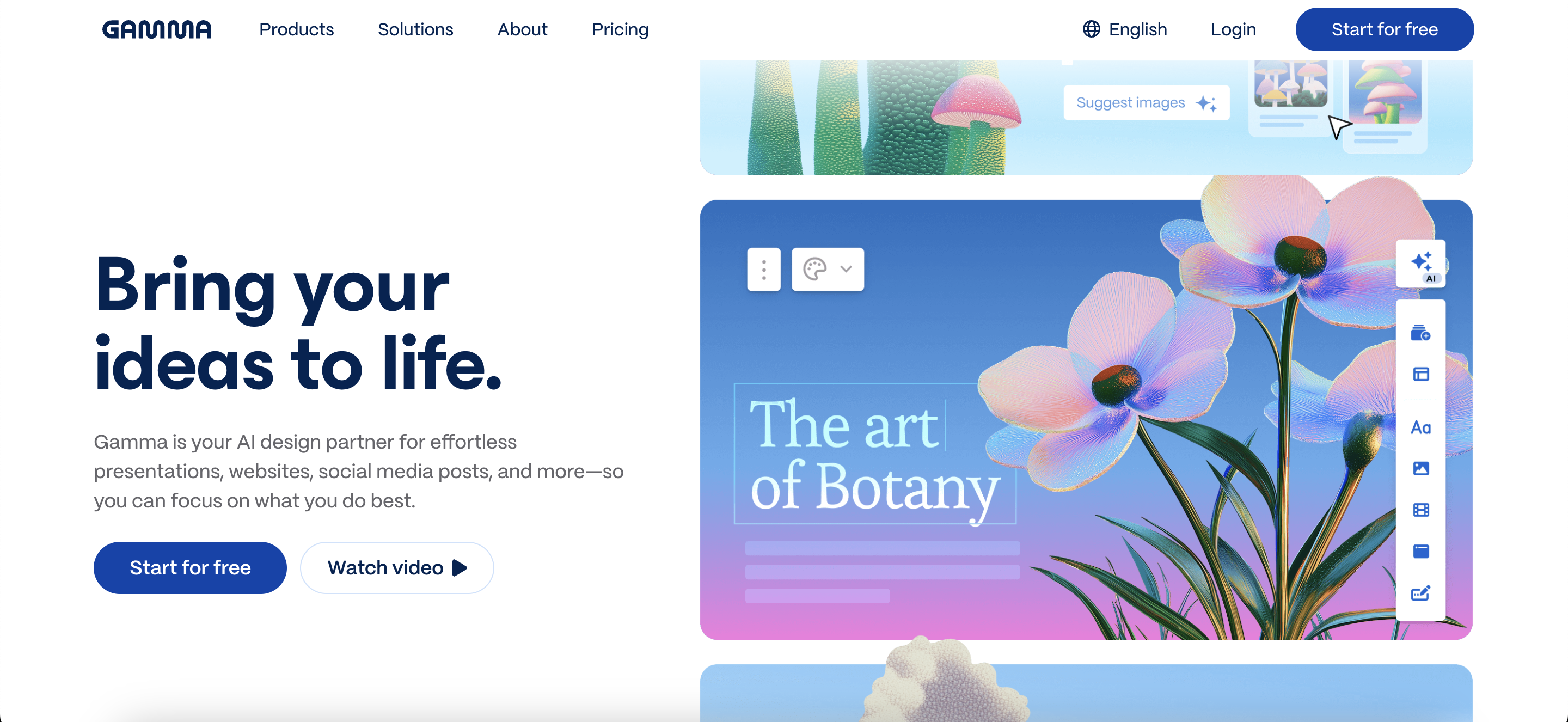
Gamma.app is ideal for summarising academic papers and turning them into structured presentations. It can upload PDFs or DOCX files, extract arguments, and create slides with formatted citations (APA, MLA, Chicago). Instead of traditional slides, Gamma uses modular “cards,” which allow flexible navigation between sections—useful for thesis defenses or literature reviews.
PopAI: Best for Data-Driven Presentations
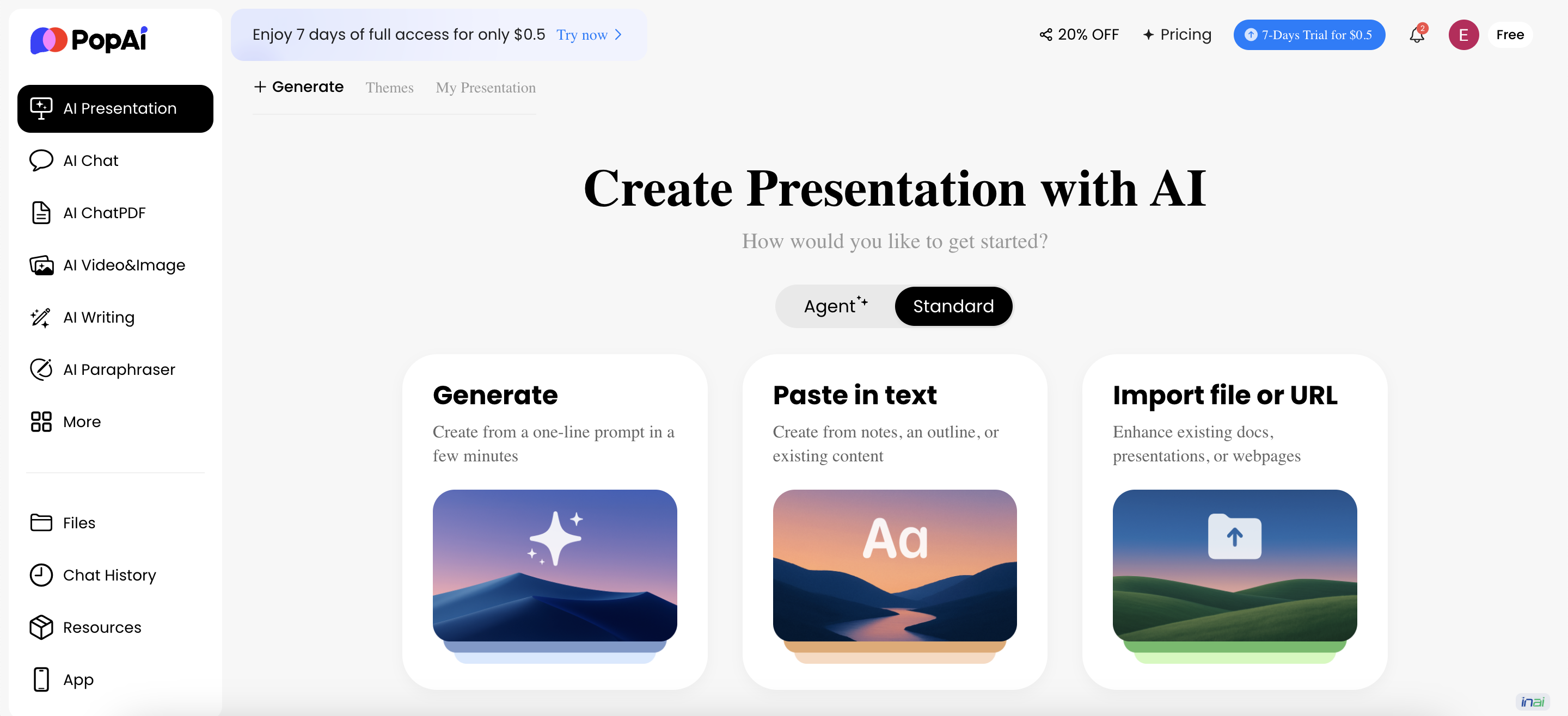
PopAI excels in handling numbers. Researchers can upload spreadsheets (Excel, CSV) and the tool automatically generates charts, graphs, and visual data summaries. It’s particularly useful in fields like medicine, economics, or STEM, where quantitative results need to be visualised clearly.
Presentations.AI: Best for Collaboration
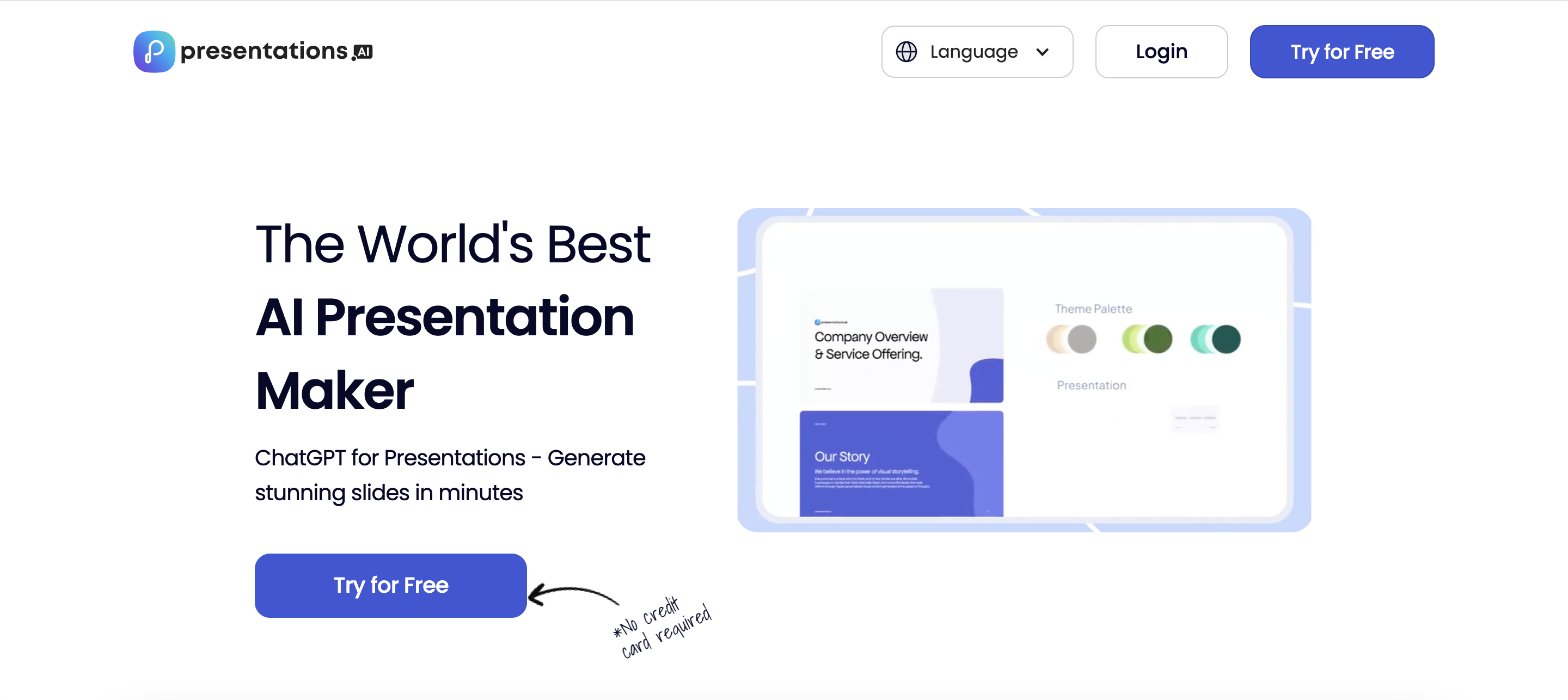
Presentations.AI focuses on team-based research projects. Multiple users can co-edit slides in real time, with automatic syncing through Google Drive. It also supports citation tools, making it practical for group assignments, co-authored research, or preparing conference presentations with colleagues.
AiPPT: Best for Fast, Multilingual Decks
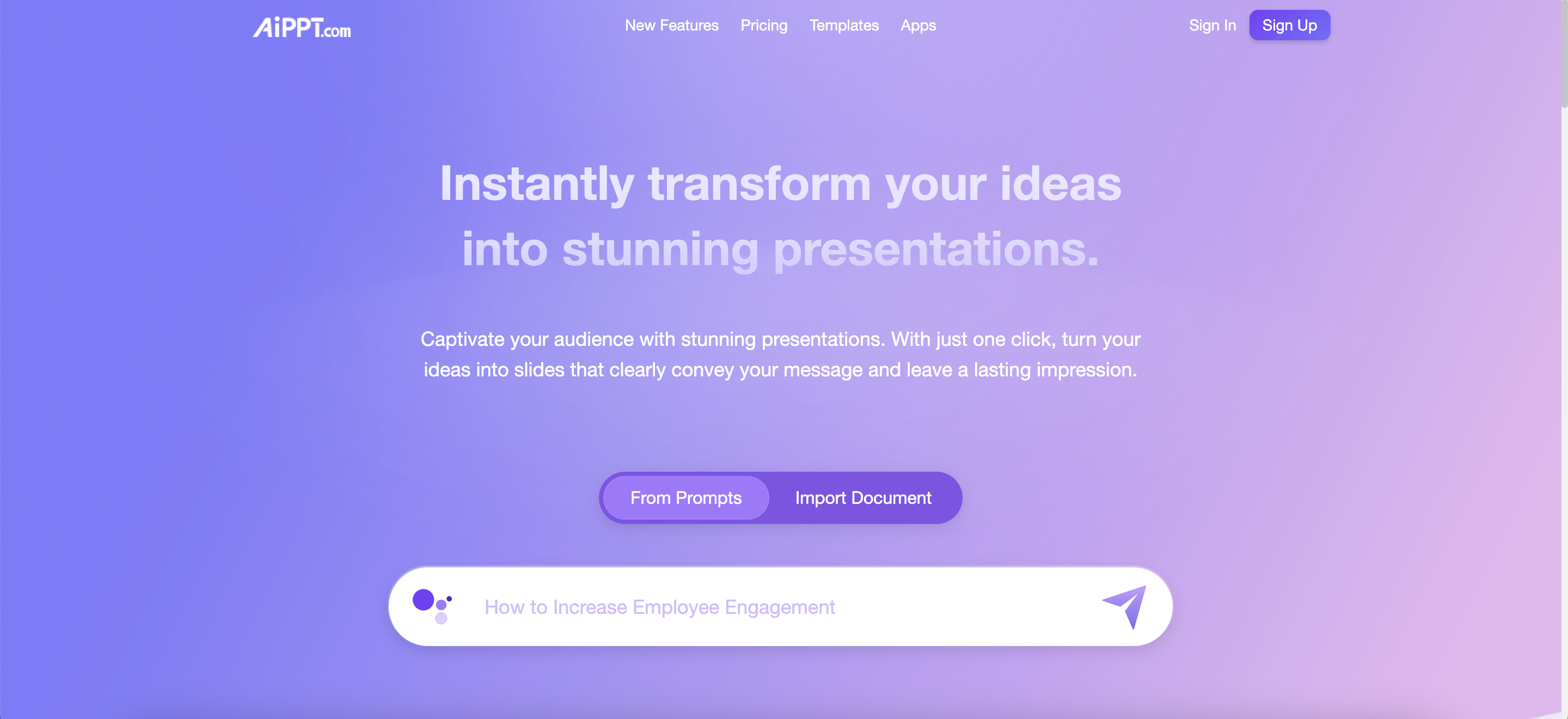
AiPPT is designed for speed. With one click, it generates slides from a topic or document, and it includes multilingual support—helpful for international research teams. It also integrates with reference managers like Zotero and Mendeley, simplifying bibliography creation.
Practical Tips for Researchers
- Use academic templates – Many AI tools include templates for systematic reviews, literature reviews, or case studies. These save time and ensure presentations follow academic structures.
- Automate citations – Connect tools like Gamma or Presentations.AI with Zotero/Mendeley to generate accurate references automatically.
- Choose based on your research type:
- Quantitative (data-heavy): PopAI
- Qualitative/text-heavy: Gamma
- Collaborative projects: Presentations.AI
- Quick classroom assignments: AiPPT
Choosing the Right Tool
- For thesis defenses → Gamma, with structured academic formatting.
- For scientific conferences → PopAI, for strong visualisation of data.
- For group projects → Presentations.AI, with collaboration tools.
- For quick deadlines → AiPPT, for rapid slide generation.
Most offer free tiers, so students can test before subscribing to premium features.
The Future of AI in Research Presentations
AI presentation tools continue to develop new features. These tools make presentations clearer and more accessible for diverse audiences.
As presentations increasingly rely on academic research, tools that connect directly with research databases become more valuable. Researchers can import structured data, references, and text summaries directly into AI-generated slides.
Zendy’s tools complement these AI presentation tools by providing access to a vast library of academic content. Researchers can find relevant studies on Zendy and seamlessly incorporate them into their presentations using AI tools like Gamma or PopAI.
The combination of AI-powered presentation tools and a comprehensive research digital library like Zendy creates a powerful workflow. Discover Zendy to explore how its AI-powered research library can enhance your presentation content, while tools like Gamma, AiPPT, Presentations.AI, PopAI perfect your delivery.
FAQs about AI Research Presentation Tools
Which AI tool is best for creating presentations with scientific data visualisations?
PopAI is the strongest option for scientific data visualisations. It features robust charting capabilities and can import complex datasets directly from Excel, CSV files, and statistical software.
How do AI presentation tools handle citations and references for academic work?
AI presentation tools automatically generate citations and bibliographies in multiple styles (APA, MLA, Chicago), placing them correctly within slides and creating comprehensive reference lists.
Can these AI research presentation tools integrate with reference management software like Mendeley or Zotero?
Yes, tools like Gamma and Presentations.AI offer direct integration with reference managers such as Mendeley and Zotero, allowing seamless import of citation data into presentations.
How much time does using an AI presentation tool save compared to traditional methods?
Based on user reports, AI presentation tools typically reduce slide preparation time by 50-70%, with the greatest savings coming from automated content organisation and design formatting.
Are there privacy concerns when uploading research data to these AI presentation platforms?
Most research presentation tools use encryption and have privacy policies protecting uploaded content, but researchers should review each tool's security measures before uploading sensitive or unpublished research.

From Curator to Digital Navigator: Evolving Roles for Modern Librarians
With the growing integration of digital technologies in academia, librarians are becoming facilitators of discovery. They play a vital role in helping students and researchers find credible information, use digital tools effectively, and develop essential research skills. At Zendy, we believe this shift represents a new chapter for librarians, one where they act as mentors, digital strategists, and AI collaborators. Zendy’s AI-powered research assistant, ZAIA, is one example of how librarians can enhance their work using technology. Librarians can utilise ZAIA to assist users in clarifying research questions, discovering relevant papers more efficiently, and understanding complex academic concepts in simpler terms. This partnership between human expertise and AI efficiency allows librarians to focus more on supporting critical thinking, rather than manual searching. According to our latest survey, AI in Education for Students and Researchers: 2025 Trends and Statistics, over 70% of students now rely on AI for research. Librarians are adapting to this shift by integrating these technologies into their services, offering guidance on ethical AI use, research accuracy, and digital literacy. However, this evolution also comes with challenges. Librarians must ensure users understand how to evaluate AI-generated content, check for biases, and verify sources. The focus is moving beyond access to information, it’s now about ensuring that information is used responsibly and critically. To support this changing role, here are some tools and practices modern librarians can integrate into their workflows: AI-Enhanced DiscoveryUsing tools like ZAIA to help researchers refine queries and find relevant studies faster. Research Data Management Organising, preserving, and curating datasets for long-term academic use. Ethical AI and Digital Literacy Training Teaching researchers how to verify AI outputs, evaluate bias, and maintain academic integrity. Collaborative Digital Spaces Facilitating research communication through online repositories and discussion platforms. In conclusion, librarians today are more than curators, they are digital navigators shaping how knowledge is accessed, evaluated, and shared. As technology continues to evolve, so will its role in guiding researchers and students through the expanding world of digital information. .wp-block-image img { max-width: 65% !important; margin-left: auto !important; margin-right: auto !important; }

Strategic AI Skills Every Librarian Must Develop
In 2026, librarians who understand how AI works will be better equipped to support students and researchers, organise collections, and help patrons find reliable information faster. Developing a few key AI skills can make everyday tasks easier and open up new ways to serve your community. Why AI Skills Matter for Librarians AI tools that recommend books, manage citations, or answer basic questions are becoming more common. Learning how these tools work helps librarians: Offer smarter, faster search results. Improve cataloguing accuracy. Provide better guidance to researchers and students. Remember, AI isn’t replacing professional judgment; it’s supporting it. Core AI Literacy Foundations Before diving into specific tools, it helps to understand some basic ideas behind AI. Machine Learning Basics:Machine learning means teaching a computer to recognise patterns in data. In a library setting, this could mean analysing borrowing habits to suggest new titles or resources. Natural Language Processing (NLP):NLP is what allows a chatbot or search tool to understand and respond to human language. It’s how virtual assistants can answer questions like “What are some journals about public health policy?” Quick Terms to Know: Algorithm: A set of steps an AI follows to make a decision. Training Data: The information used to “teach” an AI system. Neural Network: A type of computer model inspired by how the brain processes information. Bias: When data or systems produce unfair or unbalanced results. Metadata Enrichment With AI Cataloguing is one of the areas where AI makes a noticeable difference. Automated Tagging: AI tools can read through titles and abstracts to suggest keywords or subject headings. Knowledge Graphs: These connect related materials, for example, linking a book on climate change with recent journal articles on the same topic. Bias Checking: Some systems can flag outdated or biased terminology in subject classifications. Generative Prompt Skills Knowing how to “talk” to AI tools is a skill in itself. The clearer your request, the better the result. Try experimenting with prompts like these: Research Prompt: “List three recent studies on community reading programs and summarise their findings.” Teaching Prompt: “Write a short activity plan for a workshop on evaluating online information sources.” Summary Prompt: “Give me a brief overview of this article’s key arguments and methods.” Adjusting tone or adding detail can change the outcome. It’s about learning how to guide the tool rather than letting it guess. Ethical Data Practices AI tools can be useful, but they also raise questions about privacy and fairness. Librarians have always cared deeply about protecting patron information, and that remains true with AI. Keep personal data anonymous wherever possible. Review AI outputs for signs of bias or misinformation. Encourage clear policies around how data is stored and used. Ethical AI is part of a librarian’s duty to maintain trust and fairness. Automating Everyday Tasks AI can take over some of the small, routine jobs that fill up a librarian’s day. Circulation: Systems can send overdue reminders automatically or manage renewals. Chatbots: Basic questions like “What are the library hours?” can be handled instantly. Collection Management: AI can spot patterns in borrowing data to suggest which books to keep, reorder, or retire. Building Your Learning Path Getting comfortable with AI doesn’t have to mean earning a new degree. Start small: Take short online courses or micro-certifications in AI literacy. Join librarian groups or online forums where people share practical tips. Block out one hour a week to try out a new tool or attend a webinar. A little consistent learning goes a long way. Making AI Affordable Many smaller libraries worry about cost, but not every tool is expensive. Free Tools: Some open-access AI platforms, like Zendy, offer affordable access to research databases and AI-powered features. Shared Purchases: Partnering with other libraries to share licenses can cut costs. Cloud Services: Pay-as-you-go plans mean you only pay for what you actually use. There’s usually a way to experiment with AI without stretching the budget. Showing Impact Once AI tools are in use, it’s important to show their value. Track things like: Time saved on cataloguing or circulation tasks. Patron feedback on new services. How often are AI tools used compared to manual systems? Numbers matter, but so do stories. Sharing examples, like a student who found research faster thanks to a new search feature, can make your case even stronger. And remember, the future of librarianship is about using AI tools in libraries thoughtfully to keep libraries relevant, reliable, and welcoming spaces for everyone. .wp-block-image img { max-width: 75% !important; margin-left: auto !important; margin-right: auto !important; }
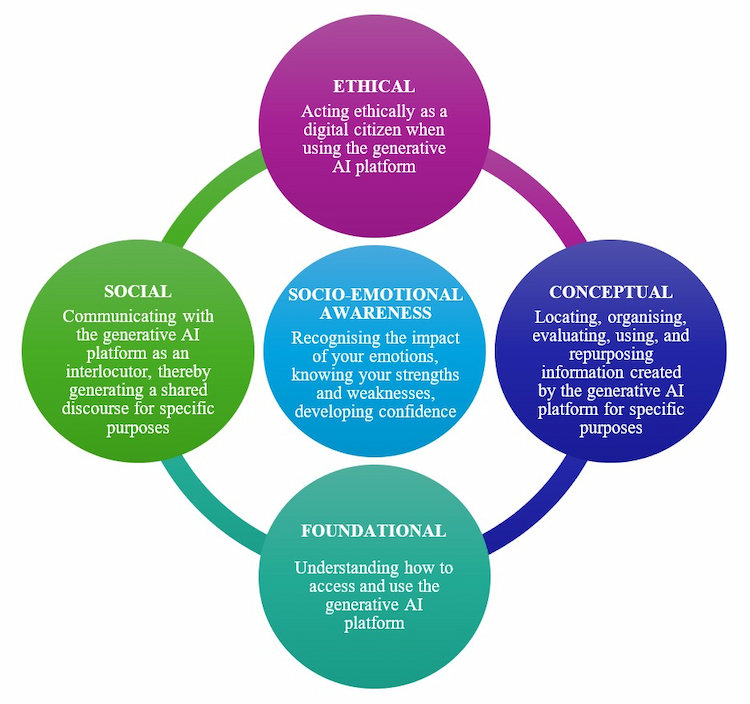
Key Considerations for Training Library Teams on New Research Technologies
The integration of Generative AI into academic life appears to be a significant moment for university libraries. As trusted guides in the information ecosystem, librarians are positioned to help researchers explore this new terrain, but this transition requires developing a fresh set of skills. Training your library team on AI-powered research tools could move beyond technical instruction to focus on critical thinking, ethical understanding, and human judgment. Here is a proposed framework for a training program, organised by the new competencies your team might need to explore. Foundational: Understanding Access and Use This initial module establishes a baseline understanding of the technology itself. Accessing the Platform: Teach the technical steps for using the institution's approved AI tools, including authentication, subscription models, and any specific interfaces (e.g., vendor-integrated AI features in academic databases, institutional LLMs, etc.). Core Mechanics: Explain what a Generative AI platform (like a Large Language Model) is and, crucially, what it is not. Cover foundational concepts like: Training Data: Familiarise staff with how to access the institution’s chosen AI tools, noting any specific authentication requirements or limitations tied to vendor-integrated AI features in academic databases. Prompting Basics: Introduce basic prompt engineering, the art of crafting effective, clear queries to get useful outputs. Hallucinations: Directly address the concept of "hallucinations," or factually incorrect/fabricated outputs and citations, and emphasise the need for human verification. Conceptual: Critical Evaluation and Information Management This module focuses on the librarian's core competency: evaluating information in a new context. Locating and Organising: Train staff on how to use AI tools for practical, time-saving tasks, such as: Generating keywords for better traditional database searches. Summarising long articles to quickly grasp the core argument. Identifying common themes across a set of resources. Evaluating Information: This is perhaps the most critical skill. Teach a new layer of critical information literacy: Source Verification: Always cross-check AI-generated citations, summaries, and facts against reliable, academic sources (library databases, peer-reviewed journals). Bias Identification: Examine AI outputs for subtle biases, especially those related to algorithmic bias in the training data, and discuss how to mitigate this when consulting with researchers. Using and Repurposing: Demonstrate how AI-generated material should be treated—as a raw output that must be heavily edited, critiqued, and cited, not as a final product. Social: Communicating with AI as an Interlocutor The quality of AI output is often dependent on the user’s conversational ability. This module suggests treating the AI platform as a possible partner in a dialogue. Advanced Prompt Engineering: Move beyond basic queries to teach techniques for generating nuanced, high-quality results: Assigning the AI a role (such as a 'sceptical editor' or 'historical analyst') to potentially shape a more nuanced response. Practising iterative conversation, where librarians refine an output by providing feedback and further instructions, treating the interaction as an ongoing intellectual exchange. Shared Understanding: Practise using the platform to help users frame their research questions more effectively. Librarians can guide researchers in using the AI to clarify a vague topic or map out a conceptual framework, turning the tool into a catalyst for deeper thought rather than a final answer generator. Socio-Emotional Awareness: Recognising Impact and Building Confidence This module addresses the human factor, building resilience and confidence Recognising the Impact of Emotions: Acknowledge the possibility of emotional responses, such as uncertainty about shifting professional roles or discomfort with rapid technological change, and facilitate a safe space for dialogue. Knowing Strengths and Weaknesses: Reinforce the unique, human-centric value of the librarian: critical thinking, contextualising information, ethical judgment, and deep disciplinary knowledge, skills that AI cannot replicate. The AI could be seen as a means to automate lower-level tasks, allowing librarians to focus on high-value consultation. Developing Confidence: Implement hands-on, low-stakes practice sessions using real-world research scenarios. Confidence grows from successful interaction, not just theoretical knowledge. Encourage experimentation and a "fail-forward" mentality. Ethical: Acting Ethically as a Digital Citizen Ethical use is the cornerstone of responsible AI adoption in academia. Librarians must be the primary educators on responsible usage. Transparency and Disclosure: Discuss the importance of transparency when utilizing AI. Review institutional and journal guidelines that may require students and faculty to disclose how and when AI was used in their work, and offer guidance on how to properly cite these tools. Data Privacy and Security: Review the potential risks associated with uploading unpublished, proprietary, or personally identifiable information (PII) to public AI services. Establish and enforce clear library policies on what data should never be shared with external tools. Copyright and Intellectual Property (IP): Discuss the murky legal landscape of AI-generated content and IP. Emphasise that AI models are often trained on copyrighted material and that users are responsible for ensuring their outputs do not infringe on existing copyrights. Advocate for using library-licensed, trusted-source AI tools whenever possible. Combating Misinformation: Position the librarian as the essential arbiter against the spread of AI-generated misinformation. Training should include spotting common AI red flags, teaching users how to think sceptically, and promoting the library’s curated, authoritative resources as the gold standard. .wp-block-image img { max-width: 65% !important; margin-left: auto !important; margin-right: auto !important; }
Address
John Eccles HouseRobert Robinson Avenue,
Oxford Science Park, Oxford
OX4 4GP, United Kingdom
